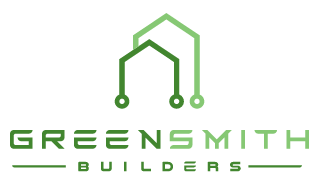
29 Oct The Virtue of Disruption
Someone once said that disruption happens gradually, then suddenly.
By Aaron Smith
https://eeba.org
The history of innovation is one of scrappy smaller competitors wielding disruption like a pickaxe—steadily chipping away at the old order. Ten years ago, Tesla was a nobody in an industry defined by legacy players. Today, the legacy players can’t keep up. Tesla’s market cap is almost five times Ford and GM’s combined.
A similar story has played out across industries. Airbnb “happened” to hospitality, Uber happened to transportation, Netflix happened to Hollywood, Robinhood happened to stock trading, and so on. But somehow, homebuilding has remained a stubborn exception. Industry incumbents have clung to their old ways. But any safety they still feel in this paradigm is a false sense of security.
I’m not sure I could have said that with confidence even just a year ago. But 2020 has changed everything.
As the pandemic raged, Americans did not turn to LEED-certified office buildings. They turned to their houses as the last line of defense against the virus. As the worst wildfires in history torched the west coast, millions wished for better air filtration systems to protect their families. As hurricanes slammed into coastal states, millions saw the need for new power sources, alternatives to gas generators, and homes built for resiliency and a carbon-neutral future.
Someone once said that disruption happens gradually, then suddenly. Well, suddenly consumers are primed for exactly what we offer: efficient, healthy, high performance homes. They are fleeing cities for the suburbs, but they’re bringing green values with them. They’re fleeing retirement facilities for traditional housing, but they’re bringing health concerns with them. They’re abandoning corporate skyscrapers for home offices, but they still crave the same modern and sustainable features.
We’re here to tell them that they can have it all. They can have what I call the triple zero: Zero health impact, zero energy, and zero carbon. They can have modern health features that are like the biodefense mode in a Tesla: they filter smoke and viral particles out of the air with ease.
They don’t have to settle for a central heating and cooling system that is 90% efficient. They can have one that is four times as efficient. In other words, not 10% more—but 310% more efficient. Every dollar they put in, they’ll get $4 out.
Our 38-year history has been preparing us for this moment. Like all disruptors, EEBA started small. We were a “niche” player for decades. But we played the long game, working in the EPA and DOE for better rules, urging industry adoption, demonstrating through actions—not just words—that high performance can mean lower cost.
We were dismissed by incumbents as a pesky annoyance—and still are by some. But what makes disruption “disruptive” is that very few people see it coming. I see it coming, and I know you do too. Because it’s coming from us.
EEBA is catalyzing it on multiple fronts.
On the consumer front, we’re engaged in a new partnership with Team Zero to drive demand for health and efficiency in both new construction and renovation.
On the industry front, we’re driving market penetration through the Builder Benchmark Group, which is designed to share best practices on everything from operations, to supply chains, to marketing, to new design technologies.
On the regulatory front, we’re working at the local, state, and federal levels to advocate for better code and wider adoption, including through programs like ENERGY STAR, the Zero Energy Ready Home Program, and Indoor airPLUS, with version 2.0 rolling out now.
Gene Myers, our great EEBA chairman, said recently that we’ve reached the end of the beginning. He’s exactly right. Yesterday, large builders could ignore high performance building with ease. Today, if they adopt it, they do so with reluctance. But tomorrow, they’ll adopt it because their survival depends on it.
And we’ll be here to help them when they do. As disruptors, our goal is not to vanquish old players. It’s to vanquish old ways. We know this won’t happen without a push. GM would never have gone electric if Tesla didn’t force its hand.
And that’s why disruption is a virtue. Because it is the precursor to adoption. Without it, change is impossible, a healthier planet is impossible, and healthier homes for our families are impossible.
Let’s usher in a future of the impossible.
I know for a fact that homebuilding’s Elon Musk is out there. In fact, it’s more than one person. And many of them are a part of EEBA. So I just ask that all of you keep up the fight. Know that it’s the good fight—and that, in time, we’ll win it.



